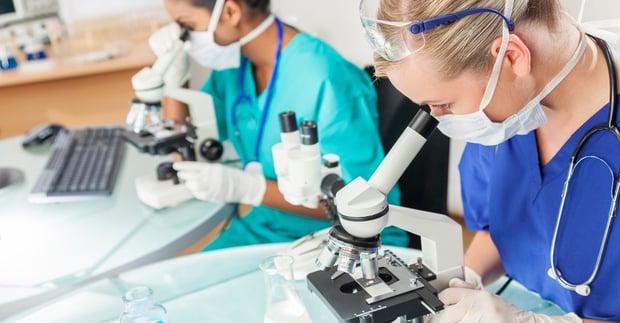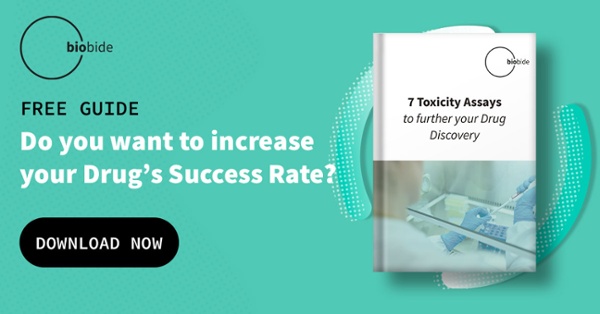To facilitate pharmaceutical development, it is essential for scientists to study the effects drugs, substances, chemicals and other agents have on humans. This comes in the form of toxicity tests, which have historically been carried out on animals. With the requirement to reduce animal testing, alternative toxicological methods have an important role in preclinical research.
Why is there a need for alternative toxicological methods?
In line with the 3Rs policy (Replacement, Reduction, Refinement), many alternative toxicological methods are being used to replace and reduce animal testing to test for the safety of drugs in the treatment and prevention of human disease. These assays are constantly evolving and improving as science advances and are a way to test on artificial models without the need for animal testing.
The Council Directive 86/609/EEC on the protection of animals used for experimental and scientific purposes states in Article 7.2: “An experiment shall not be performed if another scientifically satisfactory method of obtaining the result sought, not entailing the use of an animal, is reasonably and practicably available.”
This prompts the need for alternative toxicological methods, which are also less time-consuming and cheaper than traditional animal testing methods.
The two, key accepted alternative methods used to predict and understand toxicity are:
- In vitro
- In silico
Some examples of alternative models used in in vitro toxicity testing are cell and tissue culturing, organs-on-a-chip, fungal models and alternative species such as Zebrafish. Each of these methods closely mimics the cells of the human body (Zebrafish organs are particularly similar to human organs, they form quickly, and they are not considered an in vivo assay before 5 days post-fertilization according to an EU Directive).
In silico computer-based and mathematical modeling uses computer simulation to digitally reproduce living organisms, therefore there is no need for live samples. Existing and new data is used to identify and create compounds to predict the effects of toxicants on the structure and behavior of the molecules in the human body.
In addition to addressing the moral and ethical issues, these methods are more cost-effective and deliver more rapid results than animal testing. This makes them highly suitable for the study of human diseases and how to prevent and cure them.
Which sectors use alternative toxicological methods?
The main approved alternative test methods for toxicity in pharmaceutical development for human disease study the effects of:
- Acute toxicity. Single or repeated short-term exposure to a toxicant.
- Biologics. The modification of disease.
- Chronic toxicity. The effects of long-term exposure to a toxicant.
- Dermal corrosivity. Irreversible skin damage.
- Endocrine. Hormone-producing glands.
- Genetic. The genes associated with hereditary disorders.
- Multiple toxicity. The combination of multiple toxicants.
- Ocular. Affecting vision.
- Pyrogen. Fever-causing bacteria.
- Skin sensitisation. Allergic reactions following skin contact.
Most alternative assays deliver much faster, economical and accurate results than animal testing.
Alternative toxicological method validation
Drug development also has to go through 3 main stages before a product can be approved and marketed to the public:
- Discovery: The identification of new drugs and the modification to improve the efficacy of existing drugs
- Preclinical research: Tests on non-humans for absorption, benefits, dosage, side effects, interactions, and effectiveness
- Clinical trials:.Tests on human volunteers to assess safety and efficacy effects on the actual human body
A drug cannot be developed or submitted for regulatory approval until its testing methods are validated. This ensures all the relevant standards and testing methods are met.
ECVAM (the European Centre for the Validation of Alternative Methods) is the European Commission department that works to:
- Conduct research and collaborate in EU initiatives.
- Coordinate and undertake validation studies on alternative toxicological assays.
- Disseminate and share information.
- Promote the 3Rs policy and alternative methods.
The validation process comprises of four key stages:
- Assessment of the test method and submissions.
- Planning and conducting of validation studies.
- Coordination of independent scientific peer review.
- Development of recommendations of the validity status.
Set up in 1991 and an arm of the European Commission’s JRC (Joint Research Centre), ECVAM has successfully validated replacement to animal testing methods for:
- Skin irritation
- Skin corrosion
- Skin sensitisation
- Phototoxicity
Partial animal testing replacement methods have also been validated by ECVAM for:
- Eye irritation
- Skin sensitisation
- Genotoxicity
- Carcinogenicity
- Acute toxicity
These methods are used as a new approach to toxicity testing by many laboratories around the world and validation ensures the criteria are equally met in any tests that are carried out.






